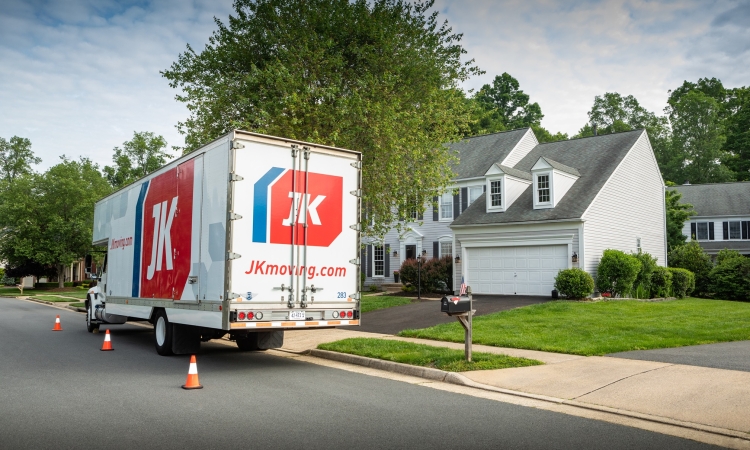By Kevin Fagan, Content Assistant, Augurisk
Moving is as stressful as it is exciting. It leads to multiple opportunities as well as challenges. You’re not just moving belongings, you’re essentially relocating your entire life. Moving also entails leaving behind familiar surroundings and friends.
You’re planning on moving to a new neighborhood, and you want to find a place that’s just right for you and your family. A place that offers the amenities you need, because it’s more than just somewhere you live. It’s the backdrop for your daily life, influencing everything from your commute to work to the safety of your family.
Choosing the right neighborhood is an essential step in finding your perfect home. A well-informed decision will usually have a better result, so take your time doing your research before you decide to move. Once you’ve narrowed down your ideal location, it’s also helpful to prepare for the relocation itself—these moving tips can make your relocation easier and less overwhelming from start to finish.
What makes a good neighborhood?
The first thing you’ll need to look at is the housing market in the area that you’re considering. It doesn’t hurt to explore the market in a few locations. Take the time required to understand the availability of houses, property prices, and housing option trends such as apartments, condos, or townhouses. This understanding will help you determine affordability and find the right fit.
Different neighborhoods offer various amenities and safety elements that impact overall quality of life. Consider factors such as proximity to work, schools, and essential services that can impact your daily routine, convenience, and overall well-being. Here are the top things to look at when choosing a neighborhood.
1. Safety and security
Consider the safety of a neighborhood before you make a decision. Examining crime rates, local law enforcement, and general safety measures can help ensure a secure living environment for you and your loved ones.
You can research the neighborhood’s crime statistics by checking online resources or talking to current residents. Rather than just looking at the risks of the broader region, it’s better to narrow down and look specifically at the risks associated with the neighborhood you’ve chosen.
For instance, if you’re looking to move to Wilmington, California, a quick look at the stats will tell you that it has a moderate crime rate and that the area is more prone to light earthquakes. With this kind of information, you can better weigh the risks and benefits of living in the area. You can check which location is the riskiest and which is the safest, and make an informed decision.
2. Lifestyle and cultural fit
Every neighborhood has a unique character and cultural atmosphere. Things to consider when picking a place to live include the community’s values, lifestyle, and cultural fit. Some neighborhoods may be more family-oriented, while others might have a vibrant nightlife or artistic scene.
To find the right fit, think about your personal interests and lifestyle preferences. Do you enjoy going out for entertainment or prefer a quieter, family-friendly atmosphere? Understanding your preferences will help you select a neighborhood that aligns with your lifestyle.
3. Community amenities and recreation
 Check what amenities and entertainment opportunities the prospective new area offers. Do these align with your hobbies, interests, and lifestyle preferences? If yes, then relocating to that area might be right for you.
Check what amenities and entertainment opportunities the prospective new area offers. Do these align with your hobbies, interests, and lifestyle preferences? If yes, then relocating to that area might be right for you.
The availability of amenities and recreational facilities can greatly enhance your daily life. Parks, gyms, community centers, and local entertainment options contribute to a healthier and more enjoyable lifestyle. For example, if you enjoy outdoor activities, look for neighborhoods with easy access to parks, walking trails, or bike paths.
Similarly, if you prefer to stay active indoors, consider the proximity of gyms or fitness centers. If it’s important to you to have access to certain products and services, make sure you can easily access them from your home.
This exercise will also help you when you do eventually move; you’ll need less time to adjust since you’ll already be quite familiar with the area. Do not overlook the future developments in the area. Upcoming projects can greatly enhance or detract from the area’s appeal and living experience.
4. Affordability and property values
The cost of living is an important consideration that can restrict your options. Look at the living costs in the locations that interest you. Evaluating the affordability of housing, property values, and potential for appreciation helps ensure that your chosen neighborhood aligns with your budget and financial goals. Research the local real estate market to understand current trends in property values before you make a decision.
You’ll also need to check the average prices for groceries, utilities, healthcare, and other necessities in the prospective area. Comparing these expenses with your current budget and financial situation should give you a fair idea of how practical it is to move into that area. You should be able to afford a comfortable lifestyle in the new location without undue pressure and burden.
5. Various aspects of daily life
When you’ve shortlisted or finalized an area, go for a few drives in the neighborhood. Ensure that these visits are at different times of the day, so you can assess how the neighborhood looks and feels at various times. It will give you a good idea about traffic congestion, potential disturbances, lighting, visibility, the presence or absence of security patrols, and other aspects that are likely to affect life in the neighborhood.
For a family with children, the perfect neighborhood will include quality local schools. Researching the reputation and performance of nearby school districts helps in making an informed decision, ensuring access to quality education. You can check school ratings and reviews online or attend open houses to get a better understanding of the educational opportunities it offers your children.
6. The community atmosphere
The overall atmosphere and community spirit of the neighborhood you choose can greatly impact your sense of belonging. A strong sense of community can lead to lasting friendships, support networks, and a greater sense of well-being. Engaging with the local community before relocating can help you gauge if you’ll fit in easily. Interactions and relationships with the other residents in an area significantly impact the living experience.
If possible, get involved with current residents by attending community events and exploring local businesses to gain insights into the community’s social dynamics. Attend community events and gatherings, and try to get to know the residents. Get a sense of the culture, values, and social dynamics of the place. You might come across like-minded people who will help make the transition a breeze. They can help you with recommendations for local services and shops because they have the necessary knowledge and experience.
7. Transportation access and commute times
A place could be beautiful and serene, just ideal to live in, but if it’s not easily accessible via a few transportation options, living there will get difficult quickly. When looking at an area for relocation, check the traffic patterns, public transportation options, and pedestrian infrastructure.
Check how easy or difficult it is to get to work, school, university, or other frequent destinations from your potential new residence. When you decide to move to an area, it may also be worthwhile to test-drive your commute during peak hours, as this travel experience will provide you with a better understanding of the challenges. You might also be able to chart a faster route to work.
Paying attention to how you’re going to commute and how long it’s going to take are essential for individuals working or studying outside the neighborhood. Is the home within walking distance of public transportation? Do you need easy access to major highways for your work commute? Consider the overall traffic situation, because that can significantly affect your daily routine. The distance to local schools, shopping centers, and public parks also will affect your schedule, so factor those aspects into your decision.
8. Future growth and development potential
Understanding the future prospects of a neighborhood is vital. Research ongoing or planned developments, infrastructure projects, and economic growth. This data can help you make a more informed decision about the neighborhood’s potential for growth and can give you a better idea of the area’s future prospects. If you plan to move again in a few years, the potential home value appreciation of the area should factor into your decision.
Additionally, take a look at factors such as housing regulations and property fees, since these will have an impact on your choice and expenses. Researching the housing market thoroughly helps you gain insights into the investment potential of an area. It allows you to identify any potential pitfalls of buying or renting in an area and prevents you from making costly mistakes. Knowledge about the housing market also enhances your negotiating power and helps ensure a sound investment.
9. General health and well-being
 Access to healthcare facilities, green spaces, and a generally clean environment contribute to the overall health and well-being of residents. Considering these factors is crucial for maintaining a high quality of life and ensuring you and your family have the resources you need to stay healthy and happy.
Access to healthcare facilities, green spaces, and a generally clean environment contribute to the overall health and well-being of residents. Considering these factors is crucial for maintaining a high quality of life and ensuring you and your family have the resources you need to stay healthy and happy.
If you have children or older adults at home, having certified pediatricians, and healthcare providers can certainly enhance your family’s quality of life. Alternatively, having access to parks for kids, and for you to take a walk in, and engage with people in the neighborhood are some things that ensure general health and well being, and hence must be considered while choosing the right neighborhood.
Conclusion
For many people, choosing the right neighborhood is essential for finding the perfect home. Considering the factors that make place great to live in will help you choose the best neighborhood for you and your family. Everyone has different priorities and preferences, so what makes a place perfect for one person may make it less than ideal for another.
Proper research and thoughtful consideration of the key factors will go a long way toward ensuring a successful relocation and smooth transition. Once you’ve decided on the area, you can move on to the next steps: prepare a budget, finalize a property, prepare for the move, and finally relocate to the new area.
About the Author
Today, we are joined by guest author, Kevin Fagan, Content Assistant from Augurisk. Augurisk provides a platform for you to check for disaster and crime risks for your home with
instant and free disaster and societal risk reports for your home, city, or neighborhood.


